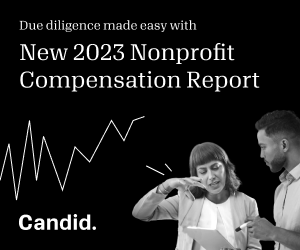Include people with disabilities in education and employment

Being in a wheelchair didn’t prevent Franklin Delano Roosevelt from propelling the United States out of the Great Depression and to victory in World War II. American culture would be much poorer without the musical contributions of Stevie Wonder. And where would quantum mechanics be without Stephen Hawking?
It’s an understatement to say that people with disabilities have made remarkable contributions to society. But that’s far from the only reason why it’s important for educational institutions and workplaces of all kinds to include them.
Including people with disabilities improves workplaces for everyone
Including people with disabilities delivers considerable returns on investment. When educational institutions and workplaces follow the tenets of Universal Design—such as equitable use, tolerance for error, and low physical effort—people with disabilities feel that they belong, which boosts their productivity and performance. Indeed, research indicates that workplaces that score high in belonging enjoy 56 percent better job performance, 50 percent less turnover, and a 75 percent decrease in sick days.
In addition, when environments and organizations follow these tenets to include everyone—especially those with disabilities—they end up working better for everyone. Studies show that Universal Design improves users’ experience of facilities, encourages their participation, and can even boost their performance.
For instance, when educational institutions offer courses in a variety of formats and timelines, everyone gets more choices. Chances go up that individual students will be able to find a good option based on their own personal situation, regardless of whether they have a disability. The online course that might have been developed specifically for people with disabilities often proves to be the best fit for other students as well.
Moreover, when workplaces offer accommodations for people with disabilities, it translates into a more humane organizational culture for everyone. When their co-workers see people with disabilities being given the support they need, they feel safer asking for support themselves, which, in turn, makes the workplace more open and positive in general.
Since healthy organizational cultures like these are more productive, the businesses themselves tend to benefit. According to NerdWallet, inclusive companies innovate at nearly twice the rate of those that aren’t, and have more than twice the amount of cash flow per team member.
Creating an inclusive organization
To implement inclusivity, educational institutions and other organizations should take a practical approach. Achieving this goal takes dedicated time and attention from people at all levels, and the nonprofit and philanthropic sectors have critical roles to play in making this change happen.
For instance, professors must educate themselves on best practices for accommodating students, as well as take the time to learn any necessary new technology. They also need to adjust their lesson plans accordingly. Professors’ effectiveness during this stage has a direct impact on student success, so this work shouldn’t be minimized or considered trivial. Student services also need to undergo a similar restructuring process.
Other organizations’ operations also need to be reviewed and assessed for their inclusivity. Staff must feel safe to speak up during this process and air any concerns. Otherwise, the exercise risks merely creating the appearance of change without the substance of it.
Therefore, it’s wise for organizational leaders to build time into their plans for a learning curve. For best results, this work shouldn’t be added on top of the tasks already on people’s plates—rather, team members should be empowered to dedicate the necessary time to these initiatives in ways that are realistic and will work for them as individuals.
The critical role of philanthropy
However, coming up with the material resources to support this transition is a challenge. Public schools have been underfunded for more than a decade and currently face a fiscal cliff.
Institutions of higher education are in no better position. According to a study by the Association of American Colleges and Universities, 74 percent of colleges and universities reported that financial constraints are their biggest problem.
Nonprofits and philanthropy are essential for creating more inclusive educational institutions and other organizations for people with disabilities. At a time when budgets are already stretched thin, material support is urgently needed to free staff members to do the hard work of examining current practices and improving them for people with disabilities. Meanwhile, the nonprofits operating in this space can provide expert guidance to make the process as effective and efficient as possible.
We have the power to turn our educational and workplace cultures into healthy, inclusive spaces. The nonprofit and philanthropic sectors can make a critical difference through this important work, and our society will thrive as a whole.
Joshua Fields is CEO of The Next Step Programs (TNS), a nonprofit he co-founded at age 16 to break down the barriers that prevent people with disabilities from finding educational and employment opportunities after high school.







Disabled people deserve more than medical research—we want liberation